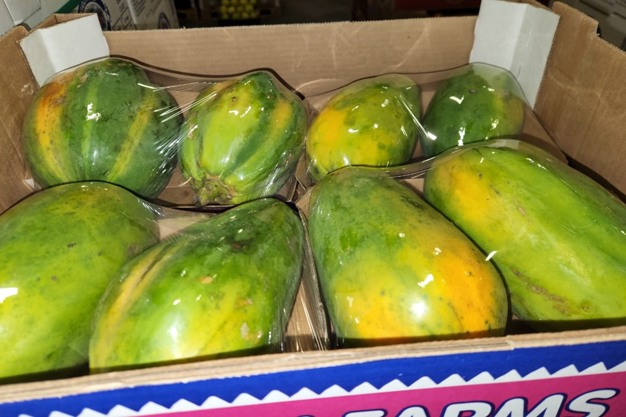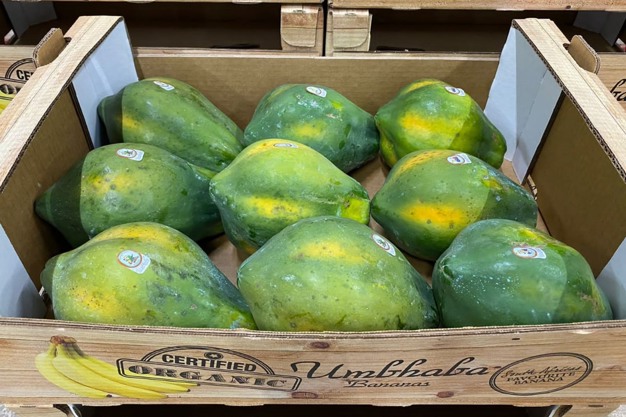Papaya supply is "a disaster", says a South African retail buyer, "for the third season running. The papaya crop had been expected to pick up in March and April, but in my twenty years I've not seen papaya supplies this low."
At the Johannesburg municipal wholesale market, papayas are equally scarce. The little coming on the market sell for R250 (12.6 euros) per 11kg carton, while a prepack (usually two to four papayas wrapped on a polystyrene tray) goes for R50 (2.5 euros), says Markus Greyling of Dapper market agency.
 Papaya prepacks from Kudu Farms.
Papaya prepacks from Kudu Farms.
"Usually volumes start coming in after Easter, but fruit is again very scarce. There are plenty of fruit on the trees, though, but they're not ready to harvest. We had a similar case last year of delayed fruit ripening and in the end papaya volumes were significantly down."
He points to the dwindling number of papaya producers, reducing from fifteen to around six stable papaya producers left in South Africa. "Many papaya growers prefer growing macadamias for the Chinese export market. What they make on macadamias per tonne is far more than they can ever make on papayas locally."
When the papaya market is saturated, he says, an 11kg carton easily drops to R70 (3.5 euros). "That comes to R4,200 [212 euros] for a palletload of papayas, and then that pallet still needs to be transported to the market, plus carton costs... Papaya growers don't make money when the market gets full."

The fruit industry is very concerned at packing costs; he mentions that a 10kg carton for soft citrus costs almost R30 (1.5 euro) each.
"The trend currently is that when product is scarce, prices climb so high that few consumers can afford it," says a fresh produce distributor on condition of anonymity. "Papayas, for instance. They are in very short supply and still not back to their normal rhythm, for the third season running."
A phenomenon that is currently playing out in South Africa's fresh produce trade is that prices are pushed extremely high at times of shortage, beyond the reach of consumers who develop resistance, she explains. When market supply eventually improves, a saturation point is quickly reached, she says, and prices lowered in an attempt to move stock which then paradoxically results in a bottleneck: according to her, melons are a recent example of this scenario.
